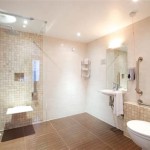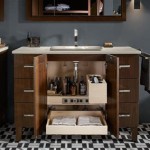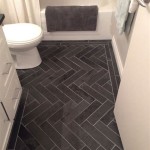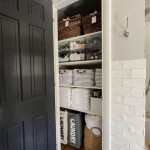White Floor Tile for Bathrooms: A Comprehensive Guide
White floor tile has long been a favored choice for bathrooms, appreciated for its versatility, clean aesthetic, and ability to create a sense of spaciousness. Its neutral backdrop allows for design flexibility and complements a wide range of color palettes and décor styles. This article explores the advantages, considerations, and practical aspects of selecting and implementing white floor tile in bathroom design.
The Enduring Appeal and Benefits of White Floor Tile
The popularity of white floor tile stems from a multitude of factors, ranging from practical benefits to aesthetic advantages. This section details some key reasons why white remains a preferred flooring option for bathrooms.
One significant advantage is the enhanced sense of brightness and spaciousness that white tiles provide. Bathrooms, often smaller rooms with limited natural light, benefit significantly from the light-reflecting properties of white. The tile reflects and diffuses available light, making the room feel larger and more airy. This is particularly advantageous in windowless or poorly lit bathrooms, where white tile can dramatically improve the overall ambiance.
Furthermore, white serves as a neutral canvas, offering unparalleled design flexibility. Any color scheme can be built around a white floor, allowing for easy integration of various accent colors and decorative elements. Whether the desired aesthetic is minimalist, modern, traditional, or eclectic, white floor tile provides a versatile foundation. Walls can be painted in bold colors, fixtures can be chosen in striking metallics, and accessories can add pops of color without clashing with the floor. This adaptability makes it a practical choice for homeowners who may wish to update their bathroom décor periodically without undertaking major renovations.
White also conveys a sense of cleanliness and hygiene, which is particularly important in a bathroom setting. The color white is often associated with purity and freshness, contributing to the perception of a well-maintained and sanitary space. While white tile may show dirt and grime more readily than darker colors, this visibility can actually be an advantage, prompting more frequent cleaning and ensuring a higher level of hygiene. Regular cleaning is crucial for maintaining the pristine appearance of white tile and preventing the buildup of stains and mildew.
Another benefit is the potential for increasing property value. A well-designed bathroom with white floor tile is often seen as a desirable feature by potential homebuyers. The clean, modern aesthetic can improve the overall appeal of the home and contribute to a higher perceived value. Investing in quality white tile can be a worthwhile upgrade that pays off in the long run.
Finally, white floor tiles are readily available in a wide range of materials, sizes, and styles. From classic ceramic and porcelain to luxurious marble and contemporary vinyl, there are numerous options to suit different budgets and design preferences. The abundance of choices allows homeowners to find the perfect white tile to complement their bathroom's specific needs and aesthetic goals.
Considerations and Challenges of Using White Floor Tile
Despite its many advantages, using white floor tile in bathrooms also presents certain considerations and potential challenges. Understanding these drawbacks is crucial for making informed decisions and mitigating potential issues.
One primary concern is the susceptibility to showing dirt and stains. While the visibility of dirt can encourage more frequent cleaning, it also means that white tile requires more diligent maintenance than darker-colored alternatives. Spills, soap scum, and hard water stains can be particularly noticeable on white surfaces and may require specific cleaning products and techniques to remove effectively. Grout lines, in particular, are prone to discoloration and staining, necessitating regular cleaning and sealing to maintain their pristine appearance.
Another potential drawback is the perception of being sterile or clinical. While the clean aesthetic of white tile is often desirable, it can also create a cold and impersonal atmosphere if not balanced with warmer elements. To counteract this, it is important to incorporate textures, colors, and accessories that add warmth and personality to the bathroom. Using natural materials such as wood, incorporating colorful artwork or textiles, and adding plants can help to soften the starkness of white tile and create a more inviting space.
Glare can also be a problem in bathrooms with ample natural light. The reflective properties of white tile can create a blinding glare, especially in bright sunlight. To minimize glare, consider using matte or textured white tiles, which diffuse light more effectively than glossy surfaces. Window treatments such as blinds, shades, or curtains can also help to control the amount of light entering the bathroom. Strategic placement of mirrors and light fixtures can further optimize lighting and minimize glare.
The cost of installation can vary depending on the type of tile and the complexity of the installation process. While some white tile options are relatively affordable, others, such as marble or high-end porcelain, can be quite expensive. Professional installation is often recommended to ensure a flawless and long-lasting result, adding to the overall cost. It is important to factor in the cost of materials, labor, and any necessary subfloor preparation when budgeting for a bathroom renovation with white floor tile.
Finally, the perceived "trendiness" of white can be a concern for some homeowners. While white has remained a classic choice for many years, design trends can change over time. Some may worry that a predominantly white bathroom will eventually look dated. To mitigate this risk, it is important to choose timeless tile styles and incorporate design elements that are not overly trendy. Focusing on quality materials, classic designs, and personal preferences can help to create a bathroom that remains stylish for years to come.
Types of White Floor Tile and Their Applications
The market offers a diverse range of white floor tile options, each with its unique characteristics, advantages, and applications. Understanding the different types of tile available is essential for selecting the best option for a specific bathroom.
Ceramic tile is a popular and affordable choice for bathroom floors. It is durable, water-resistant, and relatively easy to maintain. Ceramic tile comes in a wide variety of sizes, shapes, and styles, including options that mimic the look of natural stone or wood. It is a versatile choice that can be used in both traditional and contemporary bathrooms. However, ceramic tile is less dense and more porous than porcelain tile, making it slightly more susceptible to staining and cracking.
Porcelain tile is another excellent option for bathroom floors. It is denser and more durable than ceramic tile, making it highly resistant to water, stains, and scratches. Porcelain tile is also available in a wide range of styles and finishes, including options that mimic the look of marble, granite, and other natural stones. It is a premium choice that offers superior performance and longevity. Porcelain tiles are more expensive than ceramic but stand up to heavy use and last longer.
Marble tile offers a luxurious and elegant aesthetic. Its natural veining and unique patterns create a sophisticated and timeless look. Marble tile is highly durable and adds value to any home. However, it is also more porous than ceramic and porcelain tile, making it more susceptible to staining and etching. It requires regular sealing and specialized cleaning products to maintain its appearance. Marble is also a more expensive option than ceramic or porcelain.
Vinyl tile is a more budget-friendly option that offers good water resistance and durability. It is available in a wide range of colors, patterns, and styles, including options that mimic the look of ceramic, porcelain, and stone. Vinyl tile is easy to install and requires minimal maintenance. It is a practical choice for bathrooms that require a water-resistant and easy-to-clean floor. However, vinyl title is less resistant to scratches and scuffs than genuine stone or ceramic tiles.
Glass tile provides a unique and contemporary look. It is highly water-resistant and easy to clean. Glass tile can be used to create stunning mosaics or accent walls. It is available in a variety of colors, shapes, and sizes. However, glass tile can be more expensive than ceramic or porcelain and may require specialized installation techniques. It is also important to choose non-slip glass tiles for flooring to prevent accidents.
When selecting white floor tile for a bathroom, it is important to consider the specific needs and requirements of the space. Factors such as budget, style preferences, durability requirements, and maintenance considerations should all be taken into account. Consulting with a professional tile contractor or interior designer can help to ensure that the right type of tile is chosen for the job.

Msi Alexandra White 12 In X 24 Matte Porcelain Marble Look Floor And Wall Tile 16 Sq Ft Case

Merola Tile Textile Basic Hex White 8 5 In X 9 7 Porcelain Floor And Wall Take Home Sample

Square Ceramic Matte Floor And Wall Tile Moroccan Bathroom

Msi Pietra Calacatta White Glazed Porcelain Floor And Wall Tiles

Marazzi Archview Cloud White Matte 3 In X 6 Glazed Porcelain Tile Sample 0000hdchipar50 The Home

29 Timeless White Bathroom Floor Tile Ideas

7 Takes On A Dreamy White Subway Tile Bathroom Sweeten Com

10 Tips For Designing A Small Bathroom Maison De Pax

How To Paint Tile Floor In A Bathroom Angela Marie Made

White Luxury Bathroom Ideas Country Floors
See Also







